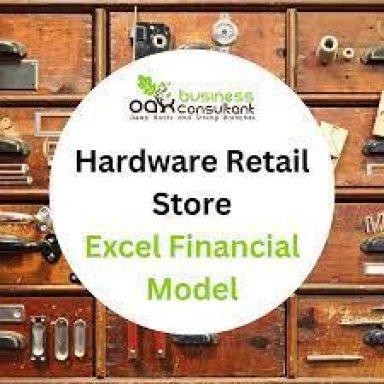
Publication number: ELQ-24721-1
View all versions & Certificate

Hardware Retail Store Excel Financial Model
This model contains several different tabs that generate reports based on your inputs. The model helps you in analysis, forecasting, and project evaluation.
Further information
The Hardware Retail Store Financial Model will assist you in managing and organizing your business efficiently. Using this model, you cannot be distracted by complicated calculations, which enables you to utilize more of your time in operational activities and manage your customers’ tasks.















